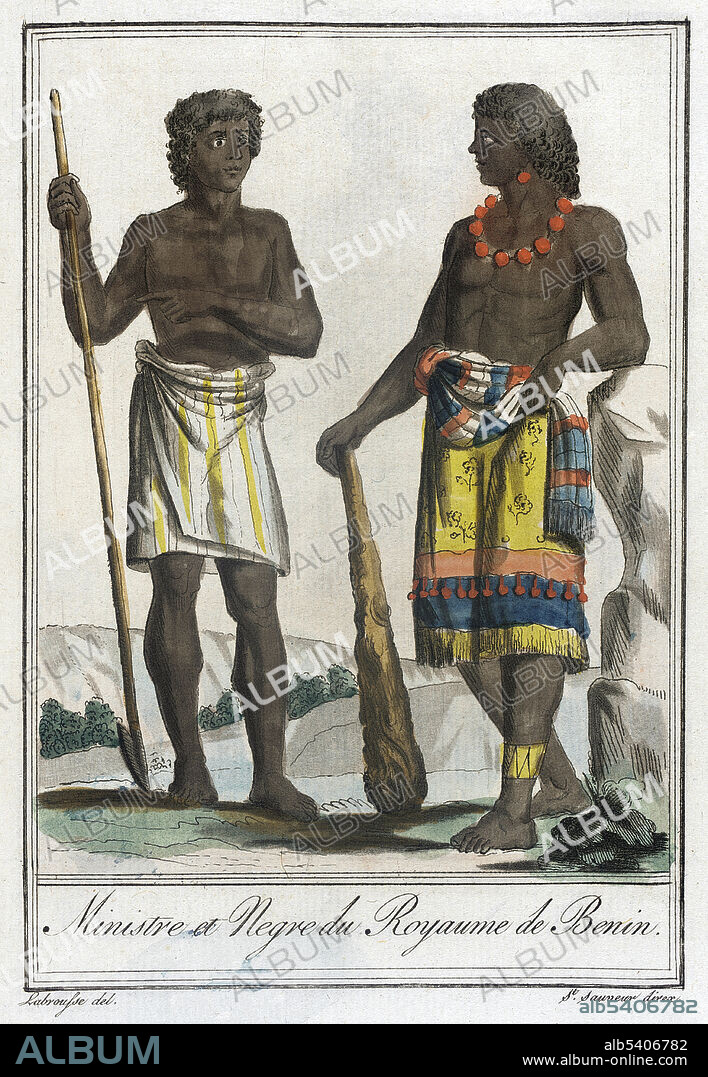alb5406782
West Africa, Dahomey Warriors,1797

|
Añadir a otro lightbox |
|
Añadir a otro lightbox |



¿Ya tienes cuenta? Iniciar sesión
¿No tienes cuenta? Regístrate
Compra esta imagen

Título:
West Africa, Dahomey Warriors,1797
Descripción:
Ver traducción automática
Ministre et Negre du Royaume de Benin. Minister and Negro of the Kingdom of Benin. The Kingdom of Dahomey was an African kingdom (present-day Benin) that existed from about 1600 until 1894, when the last king, Béhanzin, was defeated by the French, and the country was annexed into the French colonial empire. The kings of Dahomey sold their war captives into transatlantic slavery. It flourished in the region of Dahomey for almost three hundred years, beginning in 1472 with a trade agreement with Portuguese merchants. The area was named the Slave Coast because of this flourishing trade. Court protocols, which demanded that a portion of war captives from the kingdom's many battles be decapitated, decreased the number of enslaved people exported from the area. By about 1750, the King of Dahomey was earning an estimated $327,500 per year by selling African captives to European slave-traders. The number went from 102,000 people per decade in the 1780s to 24,000 per decade by the 1860s. Costumes of Different Countries, hand-tinted engraving by Labrousse, published by Jacques Grasset de Saint-Sauveur, 1797.
Personas:
Crédito:
Album / Science Source / Los Angeles County Museum
Autorizaciones:
Modelo: No - Propiedad: No
¿Preguntas relacionadas con los derechos?
¿Preguntas relacionadas con los derechos?
Tamaño imagen:
3321 x 4800 px | 45.6 MB
Tamaño impresión:
28.1 x 40.6 cm | 11.1 x 16.0 in (300 dpi)
Palabras clave:
AFRICA OCCIDENTAL • AFRICA • BENIN ARTE • HISTORIA • ROPA • SIGLO XVIII • TRADICIONAL • TRIBU • VESTIDO DE NATIVO
 Pinterest
Pinterest Twitter
Twitter Facebook
Facebook Copiar enlace
Copiar enlace Email
Email
